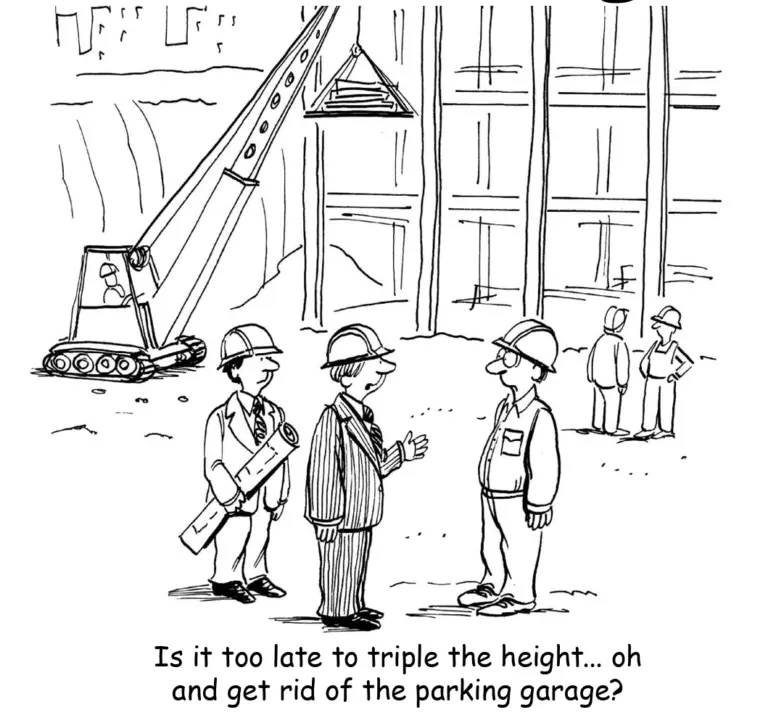By Sentinel Staff
Connecticut’s debate over statewide housing mandates has unfolded over five legislative sessions, multiple public hearings, two major policy frameworks, and hundreds of hours of testimony from residents, planners, and local officials. The path began with early efforts to reshape zoning authority through initiatives such as Work Live Ride and the Fair Share housing model. It moved through the broad provisions of HB 5002 and, ultimately, reached its next turning point in November with the passage of HB 8002 during a special session.
In towns across Connecticut, where concerns about infrastructure, local governance, and fiscal responsibility have driven public engagement, many residents said they watched each new bill reappear in revised form despite the same consistent objection: the proposals conflicted with local planning realities. Through it all, supporters continued to advance the legislation, arguing the statewide housing shortage required a uniform response.
The legislative history reveals both persistence and polarization, and it places Senator Ryan Fazio, municipal leaders— including New Canaan First Selectman Fred Camillo—and dozens of local boards at the center of the debate.
The Starting Point: Work Live Ride and Transit-Area Mandates
The earliest major proposals emerged around 2021 with Work Live Ride, developed by housing advocacy organizations seeking to expand transit-oriented development statewide. The plan focused on areas within walking distance of rail and bus stations. Supporters argued these zones were underutilized and capable of supporting substantial residential growth.
Local officials raised questions that quickly became recurring themes:
Whether train stations were located near sewer access, whether roads could support higher density, and whether the bill accounted for schools, emergency services, parking, and environmental constraints.
Testimony poured in from dozens of towns pointing out that many transit areas sat in flood zones, on narrow roads, or far from services— a mismatch between the proposed density and existing infrastructure. Opposition was concentrated, vocal, and bipartisan.
Still, the concept did not disappear. Work Live Ride became a policy foundation and informed future legislation. Even as the bill stalled, advocates signaled that the transit-density framework would return in other forms.
Fair Share: A Statewide Housing Formula Sparks Widespread Resistance
When Fair Share entered the debate, it introduced a different model. Borrowed from New Jersey’s Mount Laurel doctrine, Fair Share assigned each municipality a calculated number of housing units based on statewide need, median income, land availability, and job proximity. Towns would then be responsible for zoning to meet their assigned number.
Municipal leaders, including Carlson and selectmen from Ridgefield, Westport, Darien, and Wilton, raised concerns that the formula bypassed the local planning process entirely. Residents noted that Connecticut’s geography varied dramatically, from dense coastal cities to hilly inland towns, and asked how a single formula could account for limitations in infrastructure, water supply, and land use.
Senator Ryan Fazio, then serving his first term, publicly opposed the proposal. He argued that statewide quotas failed to consider community-specific constraints and could impose financial burdens on towns. Fazio’s early objections reflected a broader sentiment across southwestern Connecticut: residents wanted more affordable housing, but not through rigid state mandates.
Despite significant pushback, Fair Share remained a priority for advocacy groups and lawmakers who argued that Connecticut’s housing challenges required comprehensive reform. The concept reappeared, in various forms, during each legislative session that followed.
The Existing Landscape: How 8-30g Shaped the Discussion
Behind every debate was Connecticut’s long-standing affordable-housing statute, 8-30g, enacted in 1989. The law applies to towns where less than 10 percent of housing stock qualifies as deed-restricted affordable. In those towns, developers may bypass certain zoning restrictions if they set aside a portion of units as affordable. Local commissions can reject such applications only on narrow health and safety grounds.
Supporters of new mandates argued that 8-30g had not produced enough affordable housing and that additional statewide rules were needed. Opponents countered that 8-30g had already reshaped development patterns in many towns and that layering new mandates on top of the existing law would intensify pressures without providing infrastructure support.
The result was a complex legislative landscape: 8-30g continued operating across the state, while new proposals sought to impose additional statewide zoning requirements, leading many municipalities to argue they were being asked to manage overlapping, and sometimes conflicting, standards.
HB 5002: The Most Comprehensive Housing Bill in Years
In 2024, the long-running policy debate culminated in HB 5002. The bill combined several earlier concepts, including:
Statewide housing planning requirements
New zoning mandates around transit areas
Provisions resembling Fair Share
Penalties for non-compliance
Expanded oversight for the Department of Housing
HB 5002 drew substantial statewide attention. Public hearings spanned many hours and generated a flood of testimony. Local officials argued the bill’s scope was too broad, too prescriptive, and too detached from municipal conditions.
Supporters said the bill was necessary to address the state’s housing shortage and provide predictability for developers.
Senator Fazio continued to oppose the bill, pointing to affordability concerns, infrastructure constraints, and the impact on working families already facing rising living costs. His position aligned with many constituents, and he continued to raise these concerns in statements, press interviews, and committee debates.
After the legislative session closed, Governor Ned Lamont vetoed HB 5002. His statement emphasized that the bill required further refinement and indicated he believed the proposals needed additional consensus. Because the veto came months before municipal elections, some legislators and local officials publicly noted the timing, suggesting the bill’s provisions had drawn sustained public resistance that might have affected local races.
Their statements did not claim motive but reflected the political context: HB 5002 was highly debated, and many municipalities—regardless of political party—had formally opposed it.
A Strategic Reappearance: HB 8002 in Special Session
After the November elections, supporters advanced a new bill: HB 8002, a 104-page proposal introduced during a special session primarily called for unrelated legislation. HB 8002 included multiple components that resembled or directly continued elements of HB 5002, alongside new provisions.
For towns, planners, and local zoning officials, the timing raised questions. Many noted that HB 8002 appeared shortly after elections concluded, and some lawmakers— including Fazio—commented publicly on the contrast: a broad housing bill vetoed before municipal elections, then a similar one brought forward immediately after voters went to the polls.
During the House debate, which lasted nearly seven hours, Representative Tina Courpas and Representative Stephen Meskers voted against the bill. Senator Fazio announced he would oppose it in the Senate, describing HB 8002 as a continuation of the mandates that had drawn substantial public pushback in the earlier session.
Local leaders across Fairfield County echoed similar concerns. Some characterized HB 8002 as “arguably more sweeping” than HB 5002, though the bills differed in structure. Public commentators questioned whether expedited legislative timing limited public input. What is directly verifiable is that HB 8002’s special-session process moved much more quickly than a standard session would have allowed.
The bill passed the House 90–56. Supporters said the new version addressed housing shortages and provided towns with planning flexibility. Opponents argued it imposed statewide mandates that communities had repeatedly opposed during earlier public hearings.
Why Public Pushback Remained Consistent
Across each stage—Work Live Ride, Fair Share, HB 5002, and HB 8002—public testimony raised the same core objections:
1. Infrastructure and Services
Town officials noted that schools, roads, sewers, and emergency services could not absorb rapid, state-directed population growth without corresponding funding.
2. Fiscal Impacts
Finance boards warned of repercussions for municipal budgets, including education and capital planning.
3. Local Planning and Zoning Authority
Many argued that municipalities were already developing affordability strategies tailored to local needs, and that statewide mandates could disrupt or duplicate those efforts.
4. Process and Transparency
Public hearings frequently reflected frustration that housing mandates kept returning in amended form despite sustained local opposition.
Senator Fazio’s Role Across the Legislative Cycle
Throughout the five-year debate, Senator Ryan Fazio became one of the most consistent and visible opponents of statewide zoning mandates. His work included:
Publishing detailed policy analyses on affordability, utility costs, and local control Pressing for transparency on each new housing proposal
Challenging specific provisions related to infrastructure strain, family budgets, and fiscal impacts
Coordinating with municipal officials, including Carlson and others, to assess local implications
Highlighting concerns in committee debates and floor discussions
Opposing the legislative push that produced HB 8002
Fazio’s arguments often centered on affordability and governance. He emphasized that rising living costs in Connecticut already burdened working families and argued that top-down mandates would increase those pressures. His statements also pointed to local planning expertise, asserting that municipalities were capable of pursuing housing solutions without state-imposed formulas.
Throughout the debate, Fazio’s position aligned with the majority of public testimony submitted by municipalities in Fairfield County.
Where the Housing Debate Stands Now
With HB 8002 now approved in the House and expected to advance in the Senate, Connecticut enters a new phase in its long-running housing policy debate. The bill’s passage marks the first significant statewide housing legislation after several years of stalled proposals. It also highlights a persistent tension between statewide goals and local governance— a tension that shows no sign of diminishing.
Many local officials say the next months will be critical as towns analyze HB 8002’s requirements, assess planning impacts, and consider how to comply with new statewide expectations. Supporters believe the bill will encourage new housing supply. Opponents say the state must still confront the fiscal and infrastructure challenges raised during every public hearing.
What remains clear is that the journey to HB 8002 was not sudden. It was the product of five years of legislative reintroductions, policy restructuring, and persistent advocacy—despite ongoing opposition from towns, local leaders, and residents who said the proposals did not match on-the-ground realities.
Connecticut has entered a new chapter. Whether HB 8002 becomes the foundation of long-term policy or the next step in an evolving debate will depend on how towns, legislators, and residents respond in the months ahead.




